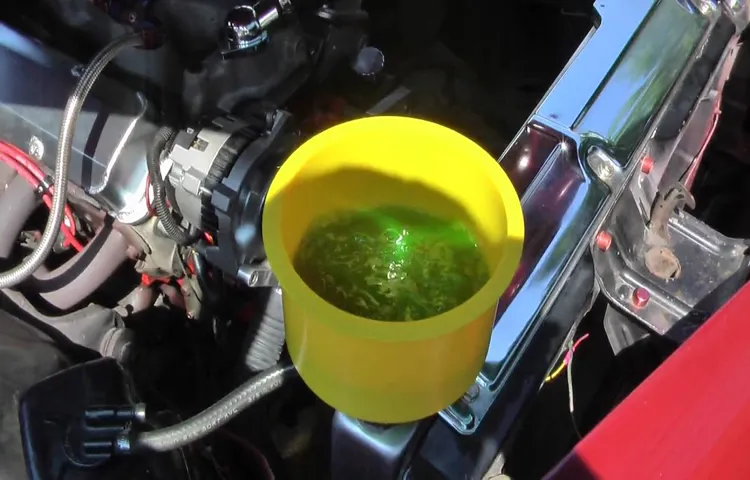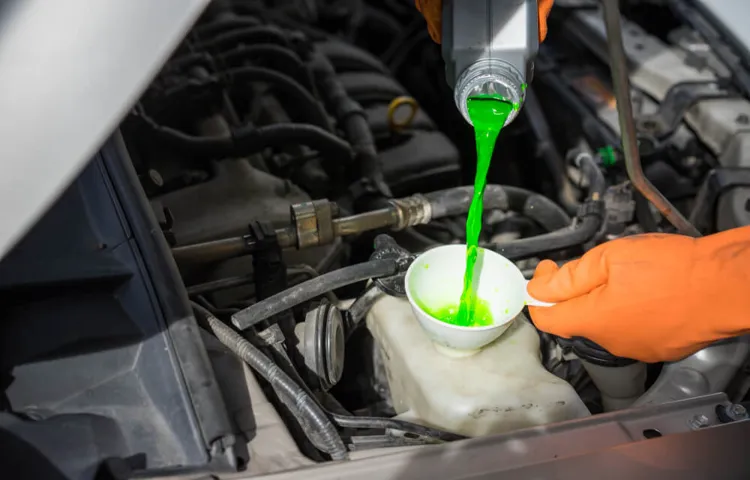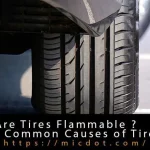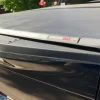If you’re a car owner, you know how important it is to properly maintain your vehicle’s cooling system. One crucial aspect of this maintenance is burping the coolant system. But how exactly do you burp a coolant system? In this blog post, we’ll walk you through the steps and provide some useful tips to make the process as smooth as possible.
Imagine your car’s coolant system as a network of veins, with coolant flowing through them to keep your engine cool. Over time, air bubbles can get trapped within this system, disrupting the flow of coolant and potentially causing your engine to overheat. Burping the coolant system is the process of removing these air bubbles and ensuring that the coolant can flow freely without any obstructions.
To begin, it’s important to locate the coolant reservoir in your vehicle. This reservoir is usually made of clear plastic and can be found near the radiator. Once you’ve located it, make sure your engine is cool before proceeding further.
Opening the coolant system while the engine is still hot can be dangerous and cause injury. Next, remove the cap from the coolant reservoir. This cap is designed to withstand high-pressure levels, so be cautious when removing it.
With the cap removed, start the engine and let it idle for a few minutes. As the engine runs, the coolant will circulate and any air bubbles should rise to the surface. While the engine is idling, keep a close eye on the coolant reservoir.
You may notice air bubbles escaping and rising to the top. This is a good sign that the burping process is working. If needed, gently tap on the coolant hoses to help dislodge any trapped air bubbles.
Table of Contents
What is Burping a Coolant System
Burping a coolant system is the process of removing trapped air from the system. When air gets trapped in the coolant system, it can prevent the coolant from flowing properly, causing the engine to overheat. To burp the coolant system, start by ensuring the engine is cool and the radiator cap is secure.
Next, locate the bleeder valve, which is usually found on or near the thermostat housing or on a coolant line. Use a wrench or socket to slowly open the bleeder valve and allow any trapped air to escape. As the air is released, you may see bubbles in the coolant.
Once the coolant flows steadily from the bleeder valve without any air bubbles, close the valve tightly. Lastly, check the coolant level in the radiator or overflow tank and top it up as needed. Burping the coolant system is an important maintenance task that ensures your engine stays cool and runs efficiently.
So if you notice any signs of overheating or have recently replaced coolant, don’t forget to burp the system to keep everything running smoothly.
Definition and Purpose
burping a coolant system Burping a coolant system refers to the process of removing air pockets or bubbles from the cooling system of a vehicle. When the coolant system is not properly “burped,” these air pockets can cause overheating and other issues with the engine. The purpose of burping a coolant system is to ensure that it is functioning effectively and to prevent any potential damage to the engine.
This process involves opening a valve or vent on the cooling system and allowing any trapped air to escape. It is important to burp the coolant system after replacing or adding coolant, as well as after any repairs that may have involved opening the cooling system. By properly burping the coolant system, you can maintain the performance and longevity of your vehicle’s engine.

Why is it Important
burping a coolant system, importance of burping a coolant system, coolant system maintenance, preventing overheating, air pockets in coolant system, coolant system efficiency
Signs That Your Coolant System Needs Burping
If you’ve ever noticed your car’s temperature gauge creeping into the red zone, it could be a sign that your coolant system needs to be burped. Burping the coolant system is a simple process that can help remove air bubbles from the system, ensuring that your engine stays cool and runs smoothly. So how do you know if your coolant system needs burping? Well, there are a few signs to look out for.
Firstly, if you’re experiencing overheating issues or if you hear gurgling sounds coming from under the hood, it’s a good indication that there may be air trapped in the coolant system. Additionally, if you notice that the coolant level in your car’s reservoir tank is consistently low, it could be a sign that air is entering the system and needs to be burped. Burping the coolant system involves opening the radiator cap and allowing the engine to run until all the air bubbles have been released.
It’s important to be cautious and follow the proper safety procedures when burping your coolant system, as the engine can get extremely hot. If you’re unsure about the process or if you don’t feel comfortable doing it yourself, it’s always best to consult a professional mechanic.
Overheating
One of the common causes of engine overheating is a malfunctioning coolant system. To prevent serious damage to your engine, it’s important to take note of the signs that your coolant system needs burping. Burping, or bleeding the coolant system, is a process of removing air bubbles that may have gotten trapped in the system.
These air bubbles can prevent proper coolant circulation, leading to overheating. One of the signs that your coolant system needs burping is if you notice your engine temperature gauge rising abnormally high. This could be an indication that there is air trapped in the system, causing the coolant to not circulate effectively.
Another sign to look out for is if you see coolant leaks under your car or notice a decrease in coolant levels. This could mean that there is a leak in the system, allowing air to enter and disrupt the coolant flow. If you experience any of these signs, it’s important to have your coolant system burped as soon as possible to avoid further damage to your engine.
Coolant Loss
coolant system, coolant loss, burping the coolant system
Steps to Burp a Coolant System
If you find yourself dealing with a cooling system that is not functioning properly, it’s essential to know how to burp a coolant system. Burping the coolant system is a simple process that can help remove any air pockets or bubbles that may have formed, preventing your engine from overheating. Here are the steps to burping a coolant system:
Start by making sure your engine is cool and the vehicle is parked on a level surface. This will ensure that you can safely access the coolant reservoir without any risk of hot fluid spilling.
Locate the coolant reservoir, which is usually a translucent plastic tank near the radiator. Consult your vehicle’s owner manual if you’re unsure about the exact location.
Remove the cap of the coolant reservoir slowly, being cautious of any pressure that might have built up. Again, it is important to ensure the engine is cool before removing the cap to avoid any injuries.
Check the coolant level in the reservoir. If it is low, add a mixture of coolant and water according to the manufacturer’s instructions. Be sure not to overfill the reservoir.
Once the coolant level is at the appropriate level, start the engine and let it run for a few minutes. This will allow the coolant to circulate through the system and release any trapped air.
Step 1: Preparation
burp a coolant system, preparation, steps
Step 2: Locate the Coolant Fill Cap
burp a coolant system, coolant fill cap, coolant system. When it comes to maintaining your vehicle’s cooling system, one important step is to burp the system. This helps to ensure that any air pockets within the system are released, allowing the coolant to flow freely and effectively cool the engine.
In order to burp the coolant system, you will first need to locate the coolant fill cap. This is typically found on the radiator or on a plastic reservoir connected to the radiator. It is important to note that you should never attempt to remove the coolant fill cap when the engine is hot, as this can result in serious burns.
Wait until the engine has cooled down completely before proceeding. Once the engine is cool, locate the coolant fill cap and carefully remove it. This will allow you to access the coolant inside the system.
Step 3: Open the Coolant Fill Cap
coolant burping, steps to burp a coolant system, opening the coolant fill cap
Step 4: Start the Engine
burping a coolant system, start the engine After completing the previous steps of filling the coolant system and checking for leaks, it’s time to start the engine and continue the process of burping the system. This step is crucial in ensuring that all air bubbles are removed from the system, allowing the coolant to circulate properly and prevent overheating. To start the engine, make sure the vehicle is in neutral or park, and turn the ignition key.
Listen for any unusual sounds or vibrations that could indicate a problem with the engine. Once the engine is running smoothly, let it idle for a few minutes to allow the coolant to warm up and start circulating. This will help in detecting any issues before they become more serious.
Keep an eye on the temperature gauge to make sure it stays within the normal range. If the engine starts to overheat, turn it off immediately and let it cool down before proceeding. Remember, safety should always be the top priority, so if you’re unsure about any step, consult a professional mechanic for assistance.
Step 5: Let the Engine Run
coolant system So, you’ve followed all the steps to burp a coolant system up until now – you’ve filled the radiator with coolant, replaced the radiator cap, and checked for any leaks. Now comes the moment of truth: it’s time to let the engine run and see if the coolant system is working properly. Start by turning on your vehicle’s engine and letting it idle for a few minutes.
This will help the coolant circulate through the system and dislodge any air bubbles that may be trapped. Keep an eye on the temperature gauge on your dashboard – if it starts to rise rapidly, it could be a sign that there’s still air in the system. If you notice any air pockets in the coolant reservoir or hear gurgling noises coming from the radiator, don’t panic.
This is a common occurrence when burping a coolant system, and it’s just the air being pushed out as the coolant circulates. Simply continue to let the engine run and monitor the temperature gauge until it stabilizes. Once the engine has reached its normal operating temperature and the temperature gauge stays steady, it’s a good sign that the coolant system has been successfully burped.
However, it’s always a good idea to double-check for any leaks or abnormalities. Take a look under the vehicle for any signs of coolant dripping and also check the smell of the coolant for any unusual odors. Remember, burping a coolant system can be a messy process, so it’s important to take precautions before starting.
Lay down a towel or some absorbent material under the radiator to catch any spills or overflow. Additionally, always be mindful of your safety when working with a hot engine – make sure to let everything cool down before removing the radiator cap or performing any other tasks. By following these steps to burp a coolant system and properly monitoring the performance of your engine, you can ensure that your vehicle is running smoothly and efficiently.
Don’t hesitate to reach out to a professional if you encounter any difficulties or are unsure about any steps in the process.
Step 6: Observe the Coolant Level
“Step 6: Observe the Coolant Level” Once you’ve gone through the steps to burp your coolant system, it’s important to also check the coolant level in your vehicle. This step will give you a good indication of whether your coolant system is functioning properly. Start by locating the coolant reservoir, which is typically a clear plastic tank near the radiator.
The coolant level should be between the minimum and maximum markers on the side of the tank. If the level is below the minimum marker, you may need to add more coolant. Be sure to use the correct type of coolant recommended by your vehicle’s manufacturer.
Adding too much or too little coolant can affect the performance of your coolant system, so it’s important to get the level just right. If you’re unsure about how to check or add coolant, consult your vehicle’s owner’s manual or seek the assistance of a professional mechanic.
Step 7: Close the Coolant Fill Cap
burp a coolant system, coolant fill cap When it comes to maintaining your car’s cooling system, burping the coolant system is an important step. This process helps to ensure that there are no air pockets or bubbles trapped in the system, which can lead to overheating and damage to your engine. One of the final steps in burping the coolant system is to close the coolant fill cap.
After you have filled the cooling system with the appropriate amount of coolant, you will want to check for any leaks or signs of air bubbles. Once you are confident that the system is filled properly, it’s time to close the coolant fill cap. The coolant fill cap is located on the top of the coolant reservoir or radiator.
It is usually a twist-on cap that seals the system and prevents any coolant from leaking out. To close the coolant fill cap, simply twist it clockwise until it is tight. Closing the coolant fill cap is important because it helps to maintain the proper pressure in the cooling system.
If the cap is not securely closed, you could experience coolant leaks or a drop in pressure, which can lead to overheating. By following these steps and closing the coolant fill cap, you can ensure that your coolant system is properly burped and ready to keep your engine cool and running smoothly. So the next time you burp your coolant system, don’t forget to close the coolant fill cap tightly.
Additional Tips for Burping a Coolant System
Burping a coolant system is an essential maintenance step for keeping your car’s engine running smoothly. While the process may seem daunting at first, it’s actually quite simple and can be done by anyone with a little patience and the right tools. First, start by parking your vehicle on a level surface and allowing the engine to cool completely.
Once the engine is cool, locate the radiator cap and twist it counterclockwise to remove it. Then, locate the bleeder valve, which is usually located on top of the thermostat housing or on one of the radiator hoses. Open the valve by turning it counterclockwise with a wrench or pair of pliers.
Next, start the engine and let it run until it reaches its normal operating temperature. As the engine runs, you may notice air bubbles escaping from the bleeder valve. This is a good sign, as it means the air is being purged from the system.
Keep an eye on the coolant level in the radiator and add more if necessary. Once no more air bubbles are escaping and the coolant level remains steady, close the bleeder valve and replace the radiator cap. It’s important to burp the coolant system regularly to prevent air pockets from forming, which can lead to overheating and engine damage.
So don’t forget to give your cooling system a proper burping every now and then to keep your car running smoothly.
Use Safety Precautions
coolant system, safety precautions, burping a coolant system, additional tips When it comes to burping a coolant system, it’s important to prioritize safety precautions. Working with coolant can be dangerous if not done properly, so taking the necessary steps to protect yourself is crucial. One of the first things you should do is make sure the engine is fully cooled down before attempting to burp the system.
Coolant can reach extremely high temperatures and can cause severe burns if it comes into contact with your skin. Additionally, always wear protective gloves and eyewear to further shield yourself from any potential harm. It’s also important to have a fire extinguisher nearby in case of any accidents or mishaps.
By following these safety precautions, you can ensure a safer and more efficient process when burping your coolant system.
Check for Leaks
coolant system, Check for Leaks, additional tips for burping a coolant system
Check the Coolant Level Regularly
coolant level, burping a coolant system
Conclusion
Now, you have learned the art of burping a coolant system, a skill that may come in handy in various situations. Remember, just like a fine wine, a well-burped coolant system ensures optimal performance and longevity for your vehicle. So, the next time you find your car feeling a bit queasy or overheating, grab your tools and burp away! Your car will thank you with a delightful belch of gratitude and smooth sailing on the open road.
“
FAQs
What is a coolant system?
A coolant system is a system in a vehicle that helps regulate the temperature of the engine and prevent it from overheating. It circulates coolant (also known as antifreeze) throughout the engine and radiator to absorb excess heat and transfer it away from the engine.
Why is it important to burp a coolant system?
Burping a coolant system is important to ensure that there are no air pockets or bubbles trapped in the system. Air pockets can prevent the coolant from properly circulating, leading to poor cooling performance and potential overheating of the engine.
How do air pockets form in a coolant system?
Air pockets can form in a coolant system during the initial filling process or when performing maintenance on the system. For example, when replacing a radiator or a hose, air can get trapped in the system. Additionally, coolant leaks can also introduce air into the system.
What are the signs of air pockets in a coolant system?
Some common signs of air pockets in a coolant system include fluctuating temperature gauge readings, coolant leaks, and gurgling noises coming from the radiator or heater core. Overheating of the engine can also be a sign of air pockets preventing proper coolant circulation.
How often should a coolant system be burped?
It is recommended to burp a coolant system whenever air pockets are suspected or after performing any maintenance on the system that may have introduced air. Additionally, it is a good practice to burp the system during regular coolant flushes to ensure optimal performance.
How can I burp a coolant system?
To burp a coolant system, start with a cool engine. Locate the coolant reservoir or radiator cap and remove it. Slowly add coolant to the system until it reaches the appropriate level. Then, start the engine and let it run until it reaches normal operating temperature. This will help expel any air pockets trapped in the system. Lastly, top off the coolant level and replace the reservoir or radiator cap.
Are there any precautions to take when burping a coolant system?
Yes, there are a few precautions to keep in mind when burping a coolant system. Always use caution when working on a hot engine, as coolant and engine components can reach high temperatures. Additionally, ensure that the engine is properly cooled down before removing the reservoir or radiator cap to prevent injury from hot coolant spray. Finally, refer to the vehicle’s manual for specific instructions or seek professional assistance if unsure.



